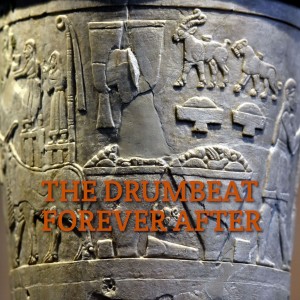
Tuesday Apr 25, 2023
37: The decline & fall of Kish, 2600-2300 BCE (Hymn to Shamash, Kesh temple hymn)
(Sorry I disappeared for three months! I burned myself out working on rewriting old episodes and had to focus on other stuff for a couple months. I'm back in the saddle now, with episodes written up to the end of the Sargonic / Old Akkadian period! Also, I switched my scripts from bullet-point outlines to full paragraphs written out, in hopes that it will take less time to edit audio. Let me know if you think it sounds too robotic.)
First, a hymn to the Semitic sun god Shamash, possibly the earliest known work of literature written in the Akkadian language, produced by the culture centered on the kingdom of Kish during the 2500s BCE. The TI.URU.DA is the SHU.AG of prince Ea, the god of rejoicing!
Then, we return to Kish now that we have more documentary evidence to make sense of its kingdom. During the Fara period (2600-2450 BCE, named after the site of Shuruppak), texts from the so-called "Kish tradition" appear to reflect Kish's hegemony over much of central Mesopotamia. We take a look at the List of Geographic Names, which may be a list of the settlements in this kingdom.
Then, we look at the geological differences between Kish (and the delta plain in the northern alluvium) and the Sumerian cities (situated in the floodplain in the southern alluvium), and the resulting differences in settlement hierarchy and political organization.
Then, we look at the city of Kish itself: its two major temple complexes (the Hursang-kalama of Ishtar and the E-kishib-ba of Zababa), its cemeteries (including the cart burials, with parallels at Ur and Susa), and its palace complex, which was sacked late in the Early Dynastic IIIB period.
Then, we examine our scanty evidence of Kish's political history during this period: two kings of Kish known from their own inscriptions, various Sumerian kings who called themselves Kings of Kish, the elusive queen Ku-Baba (alias Kug-Bau), and a few foreign kings who may have actually ruled Kish before Sargon.
Finally, we finish up with the Kesh temple hymn. Earlier versions of this text refer to a ritual performed in Kesh (with an E) by the king of Kish; later versions (produced after Kish's heyday) remove this explicit reference. Will anyone else bring forth something as great as Kesh (with an E)?
Questions? Feedback? Email us at drumbeatforeverafter@gmail.com.
Comments (0)
To leave or reply to comments, please download free Podbean or
No Comments
To leave or reply to comments,
please download free Podbean App.